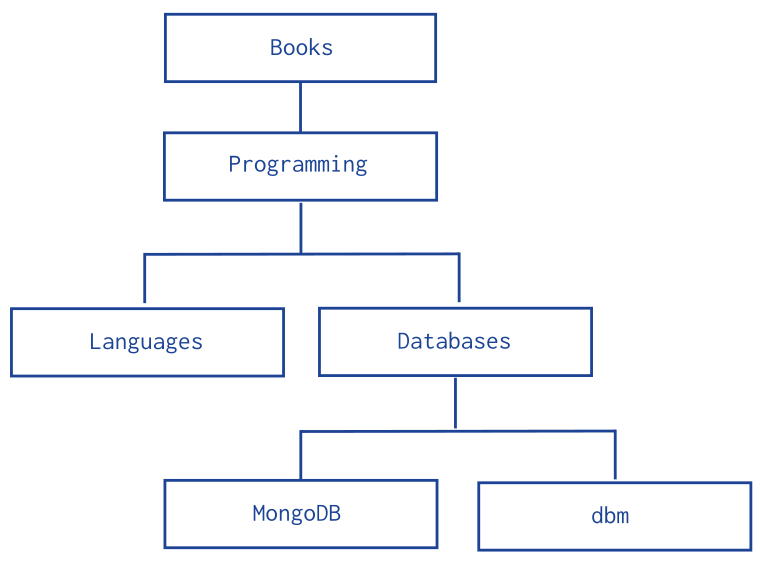- Data Models >
- Data Model Examples and Patterns >
- Model Tree Structures >
- Model Tree Structures with Parent References
Model Tree Structures with Parent References¶
Overview¶
Data in MongoDB has a flexible schema. Collections do not enforce document structure. Decisions that affect how you model data can affect application performance and database capacity. See Data Modeling Concepts for a full high level overview of data modeling in MongoDB.
This document describes a data model that describes a tree-like structure in MongoDB documents by storing references to “parent” nodes in children nodes.
Pattern¶
The Parent References pattern stores each tree node in a document; in addition to the tree node, the document stores the id of the node’s parent.
Consider the following hierarchy of categories:

The following example models the tree using Parent References,
storing the reference to the parent category in the field parent:
The query to retrieve the parent of a node is fast and straightforward:
You can create an index on the field
parentto enable fast search by the parent node:You can query by the
parentfield to find its immediate children nodes:
The Parent Links pattern provides a simple solution to tree storage but requires multiple queries to retrieve subtrees.